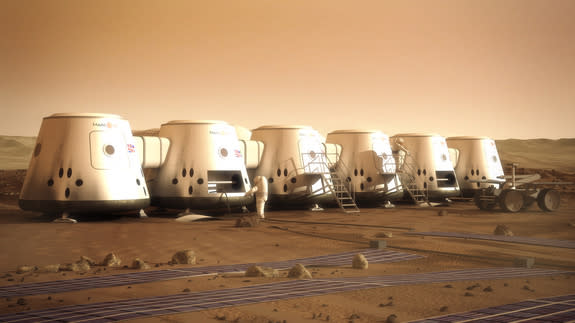 Science and Weather
Science and WeatherMars One mission narrowed to 100 candidates, but still light-years from liftoff

There’s no shortage of prospective astronauts willing to make the perilous journey to Mars on a one way trip.
The Denmark-based project called Mars One has whittled down its list of applicants to the final 100 candidates from its original pool of over 200,000 wannabe planetary colonists, who signed up back in April 2013.
“The large cut in candidates is an important step towards finding out who has the right stuff to go to Mars,” said Bas Lansdorp, co-founder & CEO of Mars One. “These aspiring martians provide the world with a glimpse into who the modern day explorers will be.”
Considered by many to be the most audacious and complex space mission of its kind, the aim is to establish a permanent human settlement on the Red Planet, starting with its first mission which will have a crew of four launching in 2024 with the entire adventure broadcast as a TV reality show.
At this point, there are 100 round three candidates who remain after being personally interviewed by the foundation’s Chief Medical Officer, Dr. Norbert Kraft.
Finding the future Martians
During the selection process the candidates were evaluated for their understanding of the risks involved in the mission, team spirit and their motivation to be part of this once-in-a-lifetime journey, according to the website.
“We were impressed with how many strong candidates participated in the interview round, which made it a very difficult selection” said Kraft in a press statement this week.
“Being one of the best individual candidates does not automatically make you the greatest team player, so I look forward to seeing how the candidates progress and work together in the upcoming challenges.”
Who exactly are the aspiring Martian settlers? Currently the whittled down list consists of 50 men and 50 women who come from all around the world; 39 from the Americas, 31 from Europe, 16 from Asia, 7 from Africa, and 7 from Oceania.
This group will be further cut to 40 candidates that will take part in a rigorous training program, living and working in a mock-Mars outpost here on Earth.
In order to lay the groundwork for the first human journey to Mars, the foundation also plans on placing communication satellites, rovers and supplies on the surface of Mars.
The space exploration community at large, however, remains skeptical about the Mars One mission in general and its ability to turn the organization’s plans into reality considering the many technical, financial and logistical hurdles.
Currently, Mars One has no contracts with any spacecraft manufacturer, has only a fraction of one percent of the estimated cost of one human mission to Mars and, possibly most telling of all, no known contract or even interest from any television network to run a Martian reality show.
What about NASA?
Meanwhile, NASA’s blueprints and tests for a possible human mission in the mid-2030s may actually get off the ground. But what would an eventual NASA mission to Mars look like?
Large habitation modules that would serve as the living quarters for any crew going to Mars will probably be built at the International Space Station. The current much-touted Orion capsule NASA is testing to replace the mothballed space shuttles is just too small for a 3 to 9 month trip to the Red Planet. It has living space equal only to about a large SUV.
The mission will also need a lander that can ferry astronauts to and from the planet’s surface.
At this point it seems NASA may be the only game in town capable of pulling off a human mission to Mars. The fact is they are the only space agency that has Mars wired with landers, orbiters and rovers right now.
The end game in going to Mars is to begin setting up a research outpost which would be continually manned in rotating shifts, much like what we see going on at the ISS and in Antarctica.
Perhaps once every 3 to 4 years there would missions rotating out both crew and supplies, allowing time for the station to gradually expand, to include a variety of support staff like doctors, nurses and technicians.
Many great minds believe that it is vital to get humans off the Earth before some kind of disaster wipes out our species. Elon Musk and Stephen Hawking, among others, have warned that the long-term success of humankind depends on not being relegated to this single planet.

